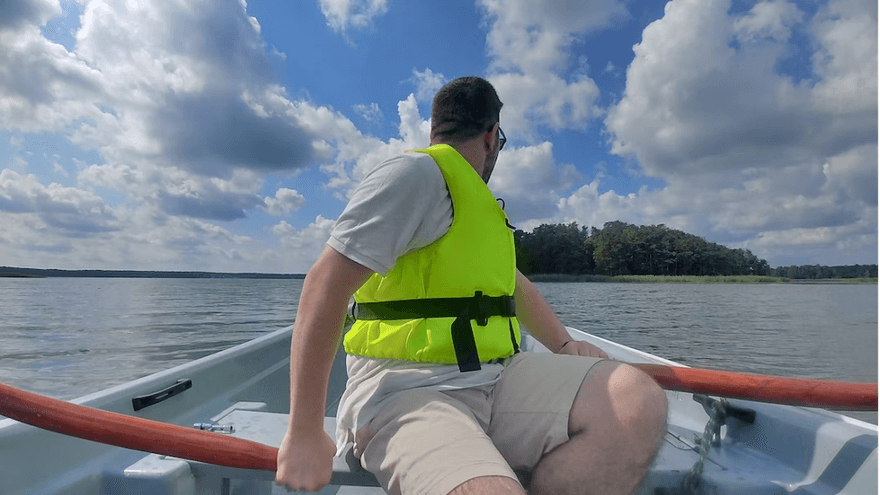20 February, 2023
You might think that the only thing you need to worry about when you're planning an outdoor adventure is packing the right gear. But there's one other important thing to consider: safety.

Before embarking on any hike, climb, or camping trip, it's crucial to do some safety planning and preparation. Think about what could go wrong and how you would respond in various situations.
What if you get lost? What if somebody in your group gets injured? What if bad weather rolls in? Thinking about potential hazards and developing a game plan can help reduce the risk of something going wrong and ensure everyone has a safe and fun time outdoors.
Being outdoors has many benefits for your mental and physical health. For example, it can reduce stress and improve concentration, to name a few. However, failure to plan properly can negate all of the wonderful opportunities that nature offers you. In this section, we’ll discuss the importance of planning and preparing for your outdoor activities.
Safety planning and preparation also include:
When engaging in any type of outdoor activity, it is critical to have a planned and practical safety plan beforehand. To create a safety plan, first, identify the type of activity and its potentially hazardous elements.
Next, establish a start and end point for the activity and provide contact information if there’s an emergency. If necessary, build a timeline for the activity and specify contingencies for potential hazards such as adverse weather conditions.
Additionally, create communication protocols to include communication methods if cell phone coverage is weak or nonexistent. Remember to also include information on over-the-counter medications needed in case of injury, prepare first aid kits or identify where to get supplies, research public land and regulations related to the activity area, assess participants' health levels before embarking on said journey, etc.
Lastly, evaluate possible risks during the activity and come up with mitigation strategies ahead of time. Establishing a clear plan before traveling helps ensure that an outdoor adventure remains safe for everyone involved.
When planning and preparing for outdoor activities, there are a few key considerations to keep in mind.
Participating in any kind of activity comes with a certain set of risks and safety hazards that you should always take into consideration. It is important to review these safety hazards beforehand to prepare accordingly and ensure everyone involved takes extra precautions.
Before engaging in any activity, make sure to get appropriate guidance on correct safety techniques and take all other necessary steps to prevent unintended incidents while enjoying the activity. Such a review can help you avoid accidents or injuries, so you should not neglect or overlook it.
It is important to make a plan to avoid (or reduce) hazardous situations when possible. Identifying potential risks and evaluating any associated consequences can ensure that you identify potential hazards and take measures to mitigate them.
Once you have identified the risks that may occur during your trip, consider creating a plan to combat any negative outcomes. This typically involves implementing measures such as reducing exposure to situations that may trigger an accident, increasing safety practices, and integrating new technologies into your existing processes.
Additionally, it’s important to inform your travel crew of potential hazards and provide necessary resources for corrective actions. Regularly updating safety protocols, testing equipment for proper operation, and understanding the changing environment are all critical components of any successful risk avoidance or mitigation plan.
Proactively addressing and eliminating risks before participating in any outdoor activity can create a safer environment and protect your crew from harm.
Outdoor activities come with certain risks, some of which are unavoidable. However, following safety guidelines and procedures can help manage these hazards. Taking the time to properly plan and prepare before heading outdoors can make a world of difference when it comes to staying safe and having a successful trip.
Consider bringing appropriate clothing, footwear, and other necessary supplies, especially when engaging in activities in more remote or extreme conditions. Also, stay up to date with weather forecasts that may affect your outing, such as thunderstorms or heat waves.
Make sure you are physically fit enough for the activity you plan to undertake, and don't forget to tell trusted family or friends where you're going and when you'll be back. When planning an outdoor adventure, remember that safety always comes first.
You'll want to make sure you bring the right gear, like plenty of water, first aid kits, and flashlights, to name just a few. Furthermore, it never hurts to research the area you're visiting so you know what terrain and weather conditions to expect. Planning for contingencies, such as knowing where the nearest medical facility is should someone get injured or become lost, is also key.
Lastly, ensuring everyone in your group is on the same page regarding safety practices can help ensure a safe and fun time outdoors. Taking the time to thoroughly plan and prepare takes some effort up front, but it's well worth it when you see how much smoother your outing goes.
It's important to be prepared and have a safety plan in place before you head out for your next outdoor adventure. By taking the time to think about what could go wrong and how you would deal with it, you'll be much better equipped to handle any situation that comes up.
You may also want to consider getting health insurance. First, however, check out the best insurance health quotes to identify one that fits your adventure and prepare for eventualities. While no one likes to think about worst-case scenarios, it's always better to be safe than sorry.
So, whether you're heading out for a day hike or an extended backpacking trip, take the time to plan and prepare first.

Kirsten Thomas is a fitness and sports enthusiast who loves to travel and is passionate. Her next goals include being an event speaker for women who are successful in the health and wellness industry and writing her own book.
Most recent articles by Kirsten Thomas

As an outdoor enthusiast, you know the importance of a balanced and healthy diet. However, some essential nutrients may be taken from other than regular food sources. That's why it's important to include supplements in your diet.
Most recent articles in ADVENTURE

Want to meet up with like-minded adventurers, try some new activities and get inspired? Try these festivals in the UK.

In January 2024 I left my home in Manchester to travel around South East Asia. Running has played a huge part in my experience of each and almost every place I’ve passed through. But this type of behaviour hasn’t always been typical of me. No, in fact a couple of years ago, I’d have thought it bizarre to even think of running whilst on the trip of a lifetime, let alone actually follow through with it and worse still, enjoy it!

Universal Pictures Content Group and Dogwoof announce THE MOUNTAIN WITHIN ME will release in UK cinemas on 23rd August 2024, preview Q&A screenings will tour the country from 19 August 2024.